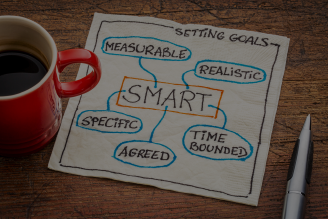CONTACT CENTER | 10 MIN READ
New Study Reveals Old Collection Methods Aren’t Working


Written by Michael Wise
Collections should be a sprint—not a marathon
If debt collection and accounts receivable are a significant part of the financial success of your business, there are several questions you should be able to answer:
- How effectively are we collecting outstanding debt before it becomes delinquent?
- How much of our debt consists of balances that are past their original due dates?
- Are your numbers getting better or worse?
If the answers to these questions make you uneasy, it’s important to point out that you’re not alone.
By the end of 2015, consumer debt had surpassed 12 TRILLION DOLLARS, and $672 BILLION of that was in the delinquency stage (over 30 days past due). While 30 days might not sound like a long time, consider this: After seven months, delinquent debt will lose 60 PERCENT of its value. The American Collector’s Association polled its members to come up with this chart.

Somebody should do a study…
You would think a $672 billion-dollar industry that bleeds money like this would’ve done exhaustive research to uncover new strategies to collect what’s owed sooner. Although some research exists, no one seems to be looking for answers from the men and women who actually owe the debt. So we did.
We asked 1,000 consumers about how a business could not only reach them, but get them to pay the money they genuinely owe. Their answers were surprising, and suggest some necessary shifts in strategy that could keep accounts from reaching that 30-day delinquency mark, or shorten the time it takes to collect on those already past.
Here are some key results from the study (the full study results are linked at the end of this article):
People take phone calls seriously
While phone calls remain an essential part of the collection process, how many respondents do you think prefer a phone call?
- Only 19%—even if it’s about an important financial issue that could soon impact their credit rating
- Consumers were twice as likely to prefer an email or even a letter in the mail over a call
When consumers know the reason for the contact is about a past due account, the percentage of consumers wanting a call drops in half.
- Only 9% want a business to contact or remind them about a past due bill
- Consumers were twice as likely to prefer an email or letter in the mail over a call
- A third of the consumers who preferred contact by phone wanted it by text
Does that mean you should stop calling people who owe you money? No. But it does reveal a much more effective strategy includes the option to communicate through all available channels. If you think email and text is just a millennial thing, and adults over 55 would never engage this way, you would be wrong. Our study compared preferences by age, household income, geographic area, even by education level.
It’s all about convenience and control
Contrary to popular belief, consumers aren’t waiting patiently by the phone with their payment information ready. If you’re calling asking for a payment, there’s more preferred methods.
- Consumers were twice as likely to prefer an email or letter in the mail over a call
- A third of the consumers who wanted contact by phone preferred a text over a call
Okay, what if you have a consumer who is able to pay off the entire debt, but they’re not answering your phone calls or responding to your letters? Would you believe convenience and timing plays a large role in a consumer’s decision to pay?
- 46% of consumers prefer to pay by clicking an email link
- Consumers polled were 3 times more likely to mail a check than pay over the phone
If you don’t send emails and have a way for consumers to pay online, you’re missing out on the No. 1 way consumers want to pay.
Perhaps the most surprising results of the study came when we asked about past due balances that were more than they could afford. Only 4.2% said they would ignore the reminders until they could pay the entire balance. Everyone else was willing to commit to some type of payment plan.
The results of this study confirm what we may have already known—not everyone likes to be put on the spot and pressured with a phone call. The study indicates consumers may be avoiding the pressure of confrontation more than paying a past due bill. The study also shows companies who provide consumer-friendly payment options have a higher likelihood of receiving payment.
2018 Benchmark Study
Want to know more?
Whether you’re looking to upgrade one part of your billing process or the whole enchilada, we can help!
Resources
Resources & Articles For Managing Your Finances On Your Own
Overcoming Call Blocking and Labeling Challenges in Debt Collection
Reaching right party contacts is hard enough. But when carriers block your calls from getting through to the consumer, or slap the dreaded “Spam Likely” onto your Caller ID, it makes a difficult job nearly impossible. But there’s a solution.
Building a Self-Service Portal that Consumers Want to Use
Creating specific, measurable, achievable, relevant, and time-bound goals are the best way to enhance agent performance, drive customer satisfaction, and ensure agent activities are aligned with your organization’s overall objectives.
What to Know If Your Call Center is Storing Unredacted Call Recordings
Creating specific, measurable, achievable, relevant, and time-bound goals are the best way to enhance agent performance, drive customer satisfaction, and ensure agent activities are aligned with your organization’s overall objectives.



